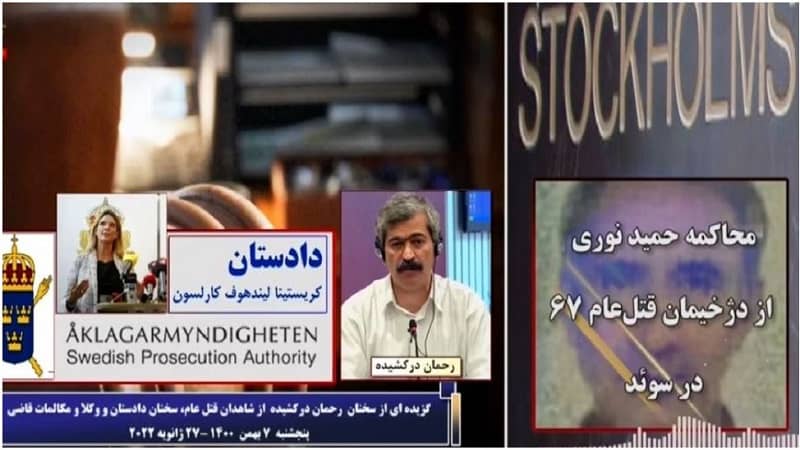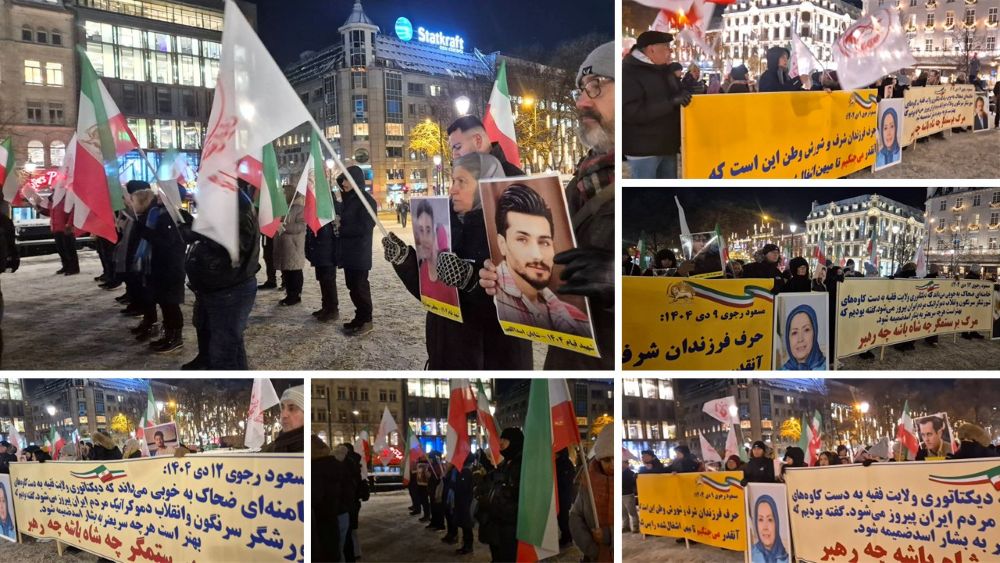
On January 27, former political prisoner Rahman Darkeshideh gave his testimony during the ongoing trial of former Iranian prison official Hamid Noury at a court in Stockholm, Sweden. Noury has been detained in the Scandinavian country since 2019, when he was arrested by Swedish authorities on a trip to the country.
Noury is charged with his involvement in the 1988 massacre in Iran, where over 30,000 political prisoners were brutally executed. His trial has been ongoing since 2020, and has featured testimonies from dozens of survivors of the massacre, who were incarcerated at Gohardasht prison, where Noury worked, during the summer of 1988.
The National Council of Resistance of Iran (NCRI) said, “Based on a fatwa by the regime’s founder Ruhollah Khomeini, the so-called ‘Death Commissions’ sent thousands of prisoners to gallows after the victims refused to disavow their allegiance to Iran’s leading opposition group, Mujahedin-e Khalq (PMOI/MEK). The Iranian regime’s president, Ebrahim Raisi, was a member of Tehran’s ‘Death Commission’.”
Following the Iranian Revolution in 1979, Darkeshideh, a Marxist, was imprisoned in 1980 and remained there until 1989. Prior to his incarceration, he had been Noury’s neighbour so he was well acquainted with him. Darkeshideh recalled, during his testimony, that Noury had been an active participant in the Iranian regime’s crimes since the revolution, but soon rose through the ranks in the regime before becoming a prison official.
Discussing his account of what happened in the summer of 1988, Darkeshideh said, “I was in solitary confinement for a while. Three times a day, every day, when the guards brought food, they opened doors of nearly 38 cells and started beating before giving food. They generally avoided beating us since we were Marxist. But they savagely beat MEK supporters.”
He described his experience being taken before the death committee, and removing his blindfold to see the officials presiding over the interrogation that was to ensue. He explained that the prisoners had already discovered that MEK supporters were being executed en-masse, and that announcing support for the opposition group was an automatic death sentence.
He recalled that when he was being interrogated by the death committee, Noury’s boss, Mohammad Moghiseh, aka Nasserian, addressed the committee claiming that Darkeshideh had been in prison using a false name.
Darkeshideh said, “Nasserian did not know me. He had just come to Gohardasht prison. But someone else knew me well, and that was Hamid Abbasi [Noury]. He had told Nasserian, and since he did not want me to see him, Nasserian came to the room. [Noury] really wanted me hanged.”
He stated that he was threatened with execution if he did not agree to become a Muslim, following his admission that he did not belong to any religion. After leaving the death commission, he was escorted by a guard to the place that had been designated for Marxist prisoners, many of whom would later be sent to the gallows.
Darkeshideh was categorised as a ‘Melikesh’, a term used to denote those who had already served their sentences at the time of the massacre, but had yet to be released. He was lucky and managed to survive the horrors, before being released from prison a year later. As for the MEK’s ‘Melikesh’ prisoners, many were executed during the massacre.
The NCRI said, “Simultaneous with the court’s session, the MEK supporters and family members of the 1988 martyrs continued their protest outside the courthouse. They called for justice for the victims and urged the international community to hold criminals like Raisi accountable for their role in the crimes against humanity.”



